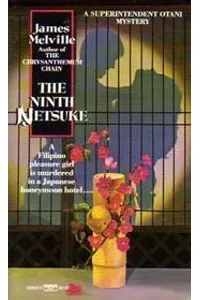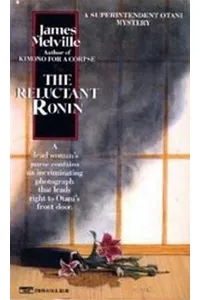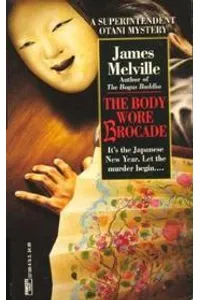Step into the enigmatic world of the Otani series, where the streets of Kobe pulse with mystery and the delicate balance of Japanese tradition meets the rush of modernity! Written by Roy Peter Martin under the pen name James Melville, this captivating collection of 13 mystery novels follows Superintendent Tetsuo Otani, a sharp-witted Kobe police officer whose investigations unravel not just crimes but the soul of post-war Japan. With a knack for blending suspense with cultural insight, the series invites readers into a world where every clue reveals a deeper truth about a nation in transition.
From the quiet rituals of a Buddhist monastery to the gritty underbelly of yakuza dealings, Otani’s cases are as much about solving murders as they are about navigating the tensions between old and new Japan. If you’re a fan of crime fiction with a cultural twist, this series is your ticket to an unforgettable journey.
How Otani Began
Roy Peter Martin, a London-born philosopher turned diplomat, fell in love with Japan during his time with the British Council. Writing as James Melville, he channeled his passion for Japanese culture into the Otani series, launching it in 1979 with The Wages of Zen. Inspired by his firsthand experiences, Martin crafted Superintendent Tetsuo Otani as a nuanced hero—a traditionalist at heart who grapples with Japan’s rapid modernization. The series, spanning 13 novels until 1992, became Martin’s love letter to Japan, blending meticulous detective work with vivid cultural portraits.
The Heart of Otani
The Otani series shines through its richly plotted mysteries and evocative settings. In The Wages of Zen (1979), Otani investigates the murder of an Irish priest in a Buddhist monastery, uncovering secrets amid cultural clashes. The Ninth Netsuke (1982) sees Otani’s wife, Hanae, discover a rare ivory figurine that leads to a national scandal and a hunt for a missing treasure. Death of a Daimyo (1984) takes Otani abroad, solving a high-stakes murder tied to Japan’s elite. Finally, The Body Wore Brocade (1992), the series’ finale, features a semi-retired Otani narrating a case involving a Noh enthusiast’s murder, tying up the series with poignant closure.
Each book weaves themes of tradition versus modernity, with Otani embodying the struggle to honor Japan’s past while embracing its future. Martin’s prose is reserved yet vivid, painting Kobe’s bustling ports and serene shrines with equal care. The series’ strength lies in its cultural authenticity—characters like Inspector Kimura and ‘Ninja’ Noguchi add humor and depth, while Otani’s devotion to his wife, Hanae, grounds the stories in human warmth. Fans of international mysteries will relish the series’ blend of procedural rigor and Japanese nuance.
Why Otani Resonates
The Otani series carved a niche in crime fiction by offering a window into modern Japanese life through a detective’s lens. Readers worldwide have praised its authentic portrayal of Japan’s post-war evolution, from the rise of technology to the persistence of ancient customs. While not a bestseller like mainstream mysteries, its cult following cherishes its thoughtful storytelling and cultural depth. For fans of authors like Georges Simenon or Tony Hillerman, Otani’s reserved yet relatable heroism feels both familiar and refreshingly unique.
The series’ legacy endures in its ability to transport readers to a specific time and place, making Japan’s complexities accessible through gripping narratives. Its influence lingers in how it paved the way for more international crime fiction, proving that mysteries can be both entertaining and enlightening.
- Publication Years: 1979–1992
- Number of Books: 13
- Setting: Kobe, Japan, with occasional international cases
- Genre: Mystery/Crime Fiction
Ready to crack cases with Superintendent Otani? Grab The Wages of Zen and dive into a world where every mystery unveils the heart of Japan!












